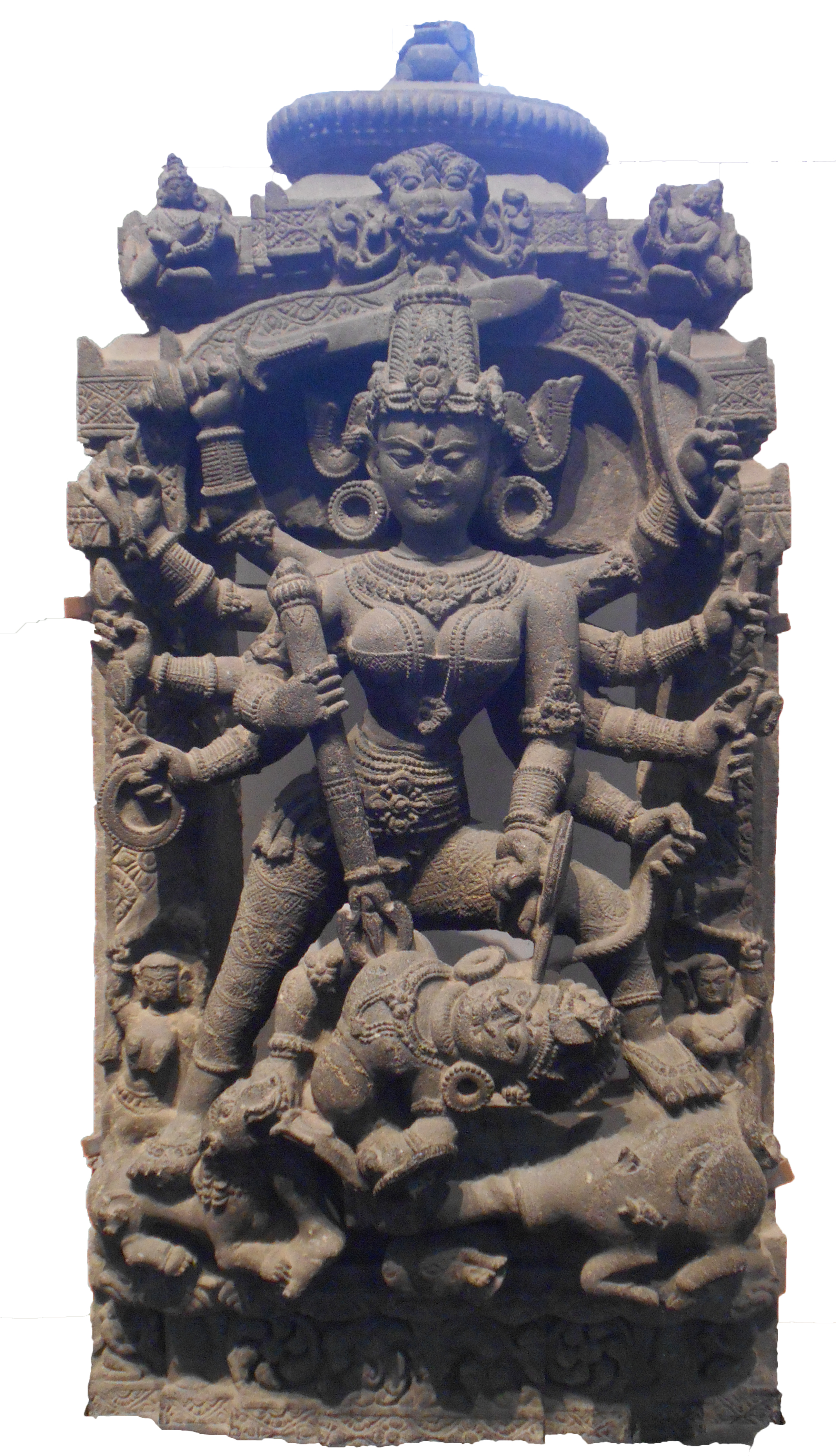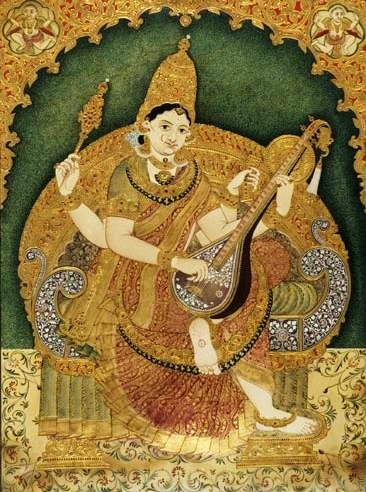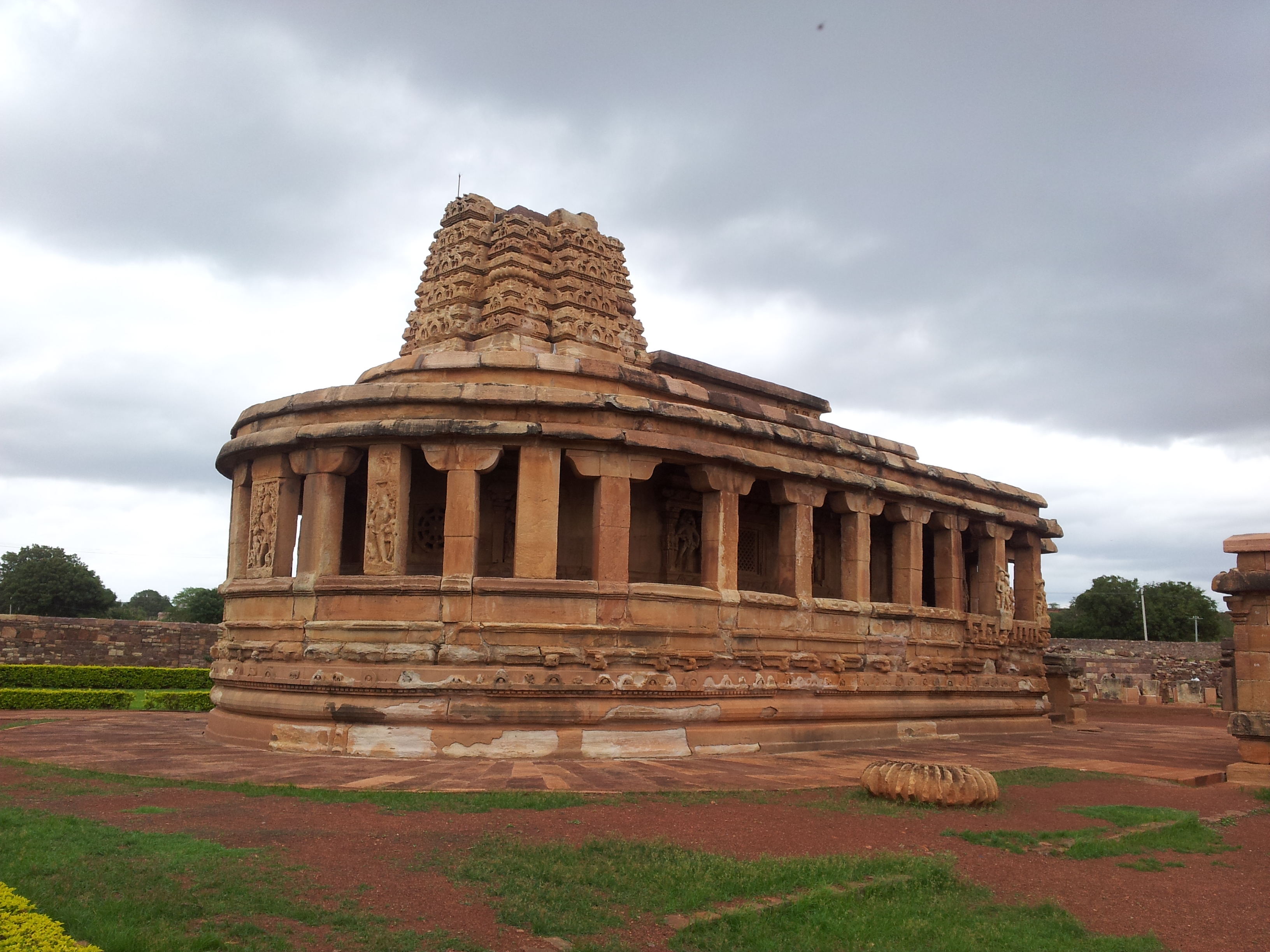|
Prakṛti
Prakriti ( ) is "the original or natural form or condition of anything, original or primary substance". It is a key concept in Hinduism, formulated by the '' Samkhya'' school, where it does not refer merely to matter or nature, but includes all cognitive, moral, psychological, emotional, sensorial and physical aspects of reality. ''Prakriti'' has three different innate qualities ( ''guṇas''), whose equilibrium is the basis of all empirical reality, in the form of the five panchamahabhootas (basic elements) – Akasha, Vayu, Agni, Jala, Pruthvi. ''Prakriti'' contrasts with '' Puruṣa'', which is pure awareness and metaphysical consciousness.James G. Lochtefeld (2001), The Illustrated Encyclopedia of Hinduism: A-M, Rosen Publishing, , Pages 224, 265, 520 The term is also found in the texts of other Indian religions such as Jainism and Buddhism. Etymology and meaning ''Prakriti'' (Sanskrit: प्रकृति) is an early Indic concept meaning "making or placing before or at ... [...More Info...] [...Related Items...] OR: [Wikipedia] [Google] [Baidu] |
Samkhya
Samkhya or Sankhya (; ) is a dualistic orthodox school of Hindu philosophy. It views reality as composed of two independent principles, '' Puruṣa'' ('consciousness' or spirit) and '' Prakṛti'' (nature or matter, including the human mind and emotions). ''Puruṣa'' is the witness-consciousness. It is absolute, independent, free, beyond perception, above any experience by mind or senses, and impossible to describe in words. ''Prakṛti'' is matter or nature. It is inactive, unconscious, and is a balance of the three '' guṇas'' (qualities or innate tendencies), namely '' sattva'', '' rajas'', and '' tamas''. When ''Prakṛti'' comes into contact with ''Purusha'' this balance is disturbed, and ''Prakṛti'' becomes manifest, evolving twenty-three tattvas, namely intellect ('' buddhi'', ''mahat''), I-principle ('' ahamkara''), mind ('' manas''); the five sensory capacities known as ears, skin, eyes, tongue and nose; the five action capacities known as hands (''hasta''), fee ... [...More Info...] [...Related Items...] OR: [Wikipedia] [Google] [Baidu] |
Yāska
Yāska (7th–5th century BCE) was an ancient Indian grammarian and Vedic linguist. Preceding Pāṇini (7th–4th century BCE), he is traditionally identified as the author of '' Nirukta,'' the discipline of "etymology" (explanation of words) within the Sanskrit grammatical tradition, and the '' Nighantu'', the oldest proto-thesaurus in India. Nirukta is one of the six Vedāṅgas (limbs of the Veda) in Hinduism. Yaska is widely regarded as the precursive founder of the discipline of what would become etymology in both the East and the West. Dating Pāṇini cites at least ten grammarians and linguists before him. According to Sumitra Mangesh Katre, the ten Vedic scholar names he quotes are of Apisali, Kashyapa, Gargya, Galava, Cakravarmana, Bharadvaja, Sakatayana, Sakalya, Senaka and Sphotayana. Determining the exact century of Yaska is difficult, and opinions of different scholars vary from 7th–5th century BC. Contribution Yaska is the author of the '' Nirukta'', a ... [...More Info...] [...Related Items...] OR: [Wikipedia] [Google] [Baidu] |
Gayatri
Gayatri (Sanskrit: गायत्री, IAST: Gāyatrī) is the personified form of the Gayatri Mantra, a popular hymn from Vedic texts. She is also known as Savitri, and holds the title of ''Vedamata'' ('mother of the Vedas'). Gayatri is the manifestation of Saraswati and is often associated with savitr, Savitṛ, a solar Devi, deity in the Vedas, and her consort in the Puranas is the creator god Brahma. Gayatri is also an epithet for the various goddesses and she is also identified as "Chaitanya (consciousness), Supreme pure consciousness". Origin Gayatri was the name initially applied to a metre of the Rig Veda consisting of 24 syllables. In particular, it refers to the Gayatri Mantra and the Goddess Gāyatrī as that mantra personified. The Gayatri mantra composed in this triplet form is the most famous. Most of the scholars identify Gayatri as the feminine form of Gayatra, another name of the Vedic Solar god which is also one of the synonyms of Savitri and Savitr, Savit ... [...More Info...] [...Related Items...] OR: [Wikipedia] [Google] [Baidu] |
Guṇa
() is a concept in Hinduism, which can be translated as "quality, peculiarity, attribute, property".guna Monier Williams' Sanskrit-English Dictionary, Cologne Digital Sanskrit Lexicon, GermanyguNa Sanskrit-English Dictionary, Koeln University, Germany The concept is originally notable as a feature of Samkhya philosophy. The guṇas are now a key concept in nearly all schools of .James G. Lo ... [...More Info...] [...Related Items...] OR: [Wikipedia] [Google] [Baidu] |
Devi-Bhagavata Purana
The Devi Bhagavata Purana (, '), also known as the Devi Purana or simply Devi Bhagavatam, is one of the eighteen Mahapuranas as per Shiva Purana of Hinduism. Composed in Sanskrit by Veda Vyasa, the text is considered a major purana for Devi worshippers ( Shaktas). It promotes ''bhakti'' (devotion) towards Mahadevi, integrating themes from the Shaktadvaitavada tradition (a syncretism of Samkhya and Advaita Vedanta). While this is generally regarded as a Shakta Purana, some scholars such as Dowson have also interpreted this Purana as a Shaiva Purana. The Purana consists of twelve cantos with 318 chapters. Along with the ''Devi Mahatmya'', it is one of the most important works in Shaktism, a tradition within Hinduism that reveres Devi or Shakti (Goddess) as the primordial creator of the universe, and as Brahman (ultimate truth and reality). It celebrates the divine feminine as the origin of all existence: as the creator, the preserver and the destroyer of everything, as well ... [...More Info...] [...Related Items...] OR: [Wikipedia] [Google] [Baidu] |
Saraswati
Saraswati (, ), also spelled as Sarasvati, is one of the principal Devi, goddesses in Hinduism, revered as the goddess of knowledge, education, learning, arts, speech, poetry, music, purification, language and culture. Together with the goddesses Lakshmi and Parvati, she forms the trinity of chief goddesses, known as the Tridevi. Sarasvati is a pan-Indian deity, venerated not only in Hinduism but also in Jainism and Buddhism.Ludvik (2007), pp. 1, 11. She is one of the prominent goddesses in the Historical Vedic religion, Vedic tradition (1500 to 500 BCE) who retains her significance in later Hinduism. In the Vedas, her characteristics and attributes are closely connected with the Sarasvati River, making her one of the earliest examples of a Rivers in Hinduism, river goddess in Indian tradition. As a deity associated with a river, Sarasvati is revered for her dual abilities to purify and to nurture fertility. In later Vedic literature, particularly the Brahmanas, Sarasvati is i ... [...More Info...] [...Related Items...] OR: [Wikipedia] [Google] [Baidu] |
Lakshmi
Lakshmi (; , , sometimes spelled Laxmi, ), also known as Shri (, , ), is one of the principal goddesses in Hinduism, revered as the goddess of wealth, fortune, prosperity, beauty, fertility, sovereignty, and abundance. She along with Parvati and Sarasvati, form the trinity of goddesses called the Tridevi. Lakshmi has been a central figure in Hindu tradition since pre-Buddhist times (1500 to 500 BCE) and remains one of the most widely worshipped goddesses in the Hindu pantheon. Although she does not appear in the earliest Vedic literature, the personification of the term '' shri''—auspiciousness, glory, and high rank, often associated with kingship—eventually led to the development of Sri-Lakshmi as a goddess in later Vedic texts, particularly the ''Shri Suktam''. Her importance grew significantly during the late epic period (around 400 CE), when she became particularly associated with the preserver god Vishnu as his consort. In this role, Lakshmi is seen as the ide ... [...More Info...] [...Related Items...] OR: [Wikipedia] [Google] [Baidu] |
Parvati
Parvati (, , IPA: /Sanskrit phonology, pɑɾʋət̪iː/), also known as Uma (, , IPA: Sanskrit phonology, /ʊmɑː/) and Gauri (, , IPA: /Sanskrit phonology, gə͡ʊɾiː/), is one of the principal goddesses in Hinduism, revered as the Devi, goddess of power, energy, nourishment, harmony, love, beauty, devotion, and motherhood. Along with Lakshmi and Saraswati, Sarasvati, she forms the trinity, known as the Tridevi. From her first appearance as a goddess during the Itihasa-Purana, epic period (400 BCE – 400 CE), Parvati is primarily depicted as the consort of the god Shiva. According to various Puranas, Parvati is the reincarnation of Sati (Hindu goddess), Sati, Shiva's first wife, who relinquished her body to sever familial ties with her father, Daksha, after he had insulted Shiva. Parvati is often equated with the other goddesses such as Sati, Uma, Kali and Durga and due to this close connection, they are often treated as one and the same, with their stories frequently ove ... [...More Info...] [...Related Items...] OR: [Wikipedia] [Google] [Baidu] |
Hinduism
Hinduism () is an Hypernymy and hyponymy, umbrella term for a range of Indian religions, Indian List of religions and spiritual traditions#Indian religions, religious and spiritual traditions (Sampradaya, ''sampradaya''s) that are unified by adherence to the concept of ''dharma'', a Ṛta, cosmic order maintained by its followers through rituals and righteous living, as expounded in the Vedas. The word ''Hindu'' is an exonym, and while Hinduism has been called the oldest religion in the world, it has also been described by the modern term ''Sanātana Dharma'' () emphasizing its eternal nature. ''Vaidika Dharma'' () and ''Arya dharma'' are historical endonyms for Hinduism. Hinduism entails diverse systems of thought, marked by a range of shared Glossary of Hinduism terms, concepts that discuss God in Hinduism, theology, Hindu mythology, mythology, among other topics in Hindu texts, textual sources. Hindu texts have been classified into Śruti () and Smṛti (). The major Hin ... [...More Info...] [...Related Items...] OR: [Wikipedia] [Google] [Baidu] |
Radha
Radha (, ), also called Radhika, is a Hindu goddess and the chief consort of the god Krishna. She is the goddess of love, tenderness, compassion, and devotion. In scriptures, Radha is mentioned as the avatar of Lakshmi and also as the Prakṛti, Mūlaprakriti, the Supreme goddess, who is the feminine counterpart and internal potency (''hladini shakti'') of Krishna. Radha accompanies Krishna in all his incarnations. Radha's birthday is celebrated every year on the occasion of Radhashtami. In relation with Krishna, Radha has dual representation—the lover consort as well as his married consort. Traditions like Nimbarka Sampradaya worship Radha as the eternal consort and wedded wife of Krishna. In contrast, traditions like Gaudiya Vaishnavism revere her as Krishna's lover and the divine consort. In Radha Vallabha Sampradaya and Haridasi Sampradaya, only Radha is worshipped as the Brahman, Supreme being. Elsewhere, she is venerated with Krishna as his principal consort in Nim ... [...More Info...] [...Related Items...] OR: [Wikipedia] [Google] [Baidu] |
Devi Mahatmya
The ''Devi Mahatmya'' or ''Devi Mahatmyam'' () is a Hindu philosophical text describing the Goddess, known as Mahadevi, Adi Parashakti or Durga, as the supreme divine parabrahma, ultimate reality and creator of the universe. It is part of the Markandeya Purana, Mārkandeya Purāna (chapters 81 to 93). ''Devi Mahatmyam'' is also known as the ''Durgā Saptashatī'' () or Śata Chandī (शत् चंडी) and ''Chandi Path'' (). The text contains 700 verses arranged into 13 chapters. It is one of the most important texts in Shaktism, along with ''Devi-Bhagavata Purana'' and Devi Upanishad. The text is one of the earliest extant complete manuscripts from the Hindu traditions which describes reverence and worship of the feminine aspect of God. The ''Devi Mahatmyam'' describes a storied battle between good and evil, where the Devi manifesting as goddess Durga leads the forces of good against the demon Mahishasura—the goddess is very angry and ruthless, and the forces of goo ... [...More Info...] [...Related Items...] OR: [Wikipedia] [Google] [Baidu] |
Avyakta
Avyakta, meaning "not manifest", "devoid of form" etc., is the word ordinarily used to denote Prakrti on account of subtleness of its nature and is also used to denote Brahman, which is the subtlest of all and who by virtue of that subtlety is the ultimate support ('' asraya'') of ''Prakrti''. Avyakta as a category along with ''Mahat'' (Cosmic Intelligence) and Purusa plays an important role in the later Samkhya philosophy even though the Bhagavad Gita III.42 retaining the psychological categories altogether drops out the ''Mahat'' and the ''Avyakta'' (Unmanifest), the two objective categories. Etymology The word ''avyakta'' is formed by combining the prefix "a," root words "vi + anja" and suffix "kta." It means unclear or unmanifested. Avyakta and origin of things ''Avyakta'' plays a role in Charaka's theory of the composition of the human body. He identifies ''cetanā,'' as one of six basic elements. The other five elements are earth, water, fire, air, and space. ''Avyakta'' ... [...More Info...] [...Related Items...] OR: [Wikipedia] [Google] [Baidu] |





